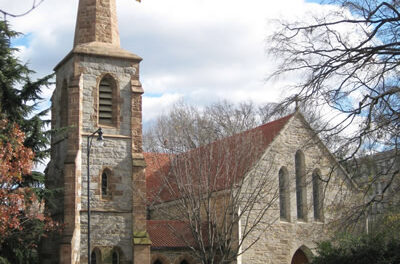Two very disparate pieces, composed a century and a half apart, were on the program at Sunday afternoon’s Greensboro Symphony Orchestra/Rice Toyota Sitkovetsky and Friends Chamber Concert: Beethoven’s Violin Sonata in D, Op. 10, No. 1, and Messiaen’s Quartet for the End of Time. The concert featured GSO music director Dmitry Sitkovetsky (violin), UNCG faculty member Inara Zandmane (piano), and GSO first chair players Kelly Burke (clarinet) and Alexander Ezerman (cello).
As is customary, Sitkovetsky provided some background about both pieces. Calling Ludwig van Beethoven (Germany, 1770-1827) “the Prometheus of music,” he explained that this was the first of ten violin sonatas that Beethoven would eventually compose. Following Mozart’s model, the work is arranged in a fast-slow-fast order, and the middle movement is cast as a theme and variations. Sitkovetsky served as violinist with Zandmane at the keyboard.
The opening Allegro con brio was taken at a lively tempo, and the main tunes were often presented by one of the two, with the other immediately restating it. The movement exudes elegance with some good humor. The second movement begins with a straightforward statement of the theme. A series of delightful variations follow, each a bit more ornamented and more dramatic than the previous one, climaxing in one cast in a minor mode. The Rondo finale is buoyant, with lots of interplay between the two instruments.
Sitkovetsky’s playing was delightful, and Zandmane matched the violinist’s verve and energy. Communication between the two resulted in great ensemble. Zandmane is a powerful player, and occasionally the violinist could have been louder. That and rare intonation issues did nothing to detract from the pleasing performance.
Sitkovetsky explained that the Quartet for the End of Time by Olivier Messiaen (France, 1908-92) was written in a German prison after the composer was captured working for the French army as an ambulance driver. The novel instrumentation (piano, violin, clarinet, and cello) is explained by the fact that Messiaen was a pianist and three other prisoners who were musicians played these instruments. The first performance took place before 400 prisoners and guards in the bitter cold of January 1941.
The 50-minute piece is in eight sections, each with a descriptive title. The four musicians explored Messiaen’s various and sometimes unusual combinations of instruments to create a kaleidoscope of timbres. Messiaen was a devout Catholic, and the work was inspired by verses from the Book of Revelations.
The opening “Liturgie de cristal” (Crystal liturgy) is written for all four instruments, with the clarinet and violin imitating bird songs. The chordal support comes from the piano while the cello is in the stratosphere, playing harmonics. The score’s rhythm is treacherously difficult, but ensemble connection among the four players was amazing in this performance.
“Vocalise, pour l’Ange qui annonce la fin du Temps” (Vocalise for the Angel who announces the end of time) is also scored for all four instruments. The somewhat frenetic outer sections, according to the composer, “evoke the power of this mighty angel,” while the more meditative middle pairs the cello and violin playing with mutes in a doubled melody two octaves apart. Meanwhile, according to the composer, the piano is playing “sweet cascades of blue-orange chords.” Again, ensemble was tight and intonation spot-on.
“Abîme des oiseaux” (Abyss of the birds) is for solo clarinet. Sometimes incredibly slow moving and other times frenzied, Burke’s playing of this movement was phenomenal. From the very bottom of the range to the top, her tone was strong and vibrant. “Intermède” (Interlude) is the shortest movement, written for violin, clarinet, and cello; in the opening and ending, the three musicians successfully navigated unison passages, balancing their different textures. In the more lyric and tonal middle section, the three instruments go their distinct, individual ways.
“Louange à l’Éternité de Jésus” (Praise to the eternity of Jesus) is the longest movement and is scored for cello and piano. The tempo marking is “infinitely slow, ecstatic.” This is a restful movement, accessible, tonal, and intensely beautiful. Ezerman’s playing was exquisite. Zandmane’s steady chordal accompaniment gratifyingly supported the cellist.
“Danse de la fureur, pour les sept trompettes” (Dance of fury, for the seven trumpets) brings all four instruments back together for a unison romp. According to Messiaen, the music imitates “gongs and trumpets (the first six trumpets of the Apocalypse followed by various disasters).” Again, ensemble was terrific, especially difficult in this very syncopated movement. “Fouillis d’arcs-en-ciel, pour l’Ange qui annonce la fin du Temps” (Tangle of rainbows, for the Angel who announces the end of time) is scored for the entire quartet, although the movement begins with a lyric cello line accompanied by piano. The quartet here maintained the contrasts in this multi-sectional movement that contains hectic passages alternating with more gentle sections.
“Louange à l’Immortalité de Jésus” (Praise to the immortality of Jesus) is for violin and piano. Messiaen called it a “second eulogy” (the first was the fifth movement). The performance of this movement slowly unfolded, beautiful and meditative, with Sitkovetsky’s violin ending in the heavens; as the composer stated, “the slow ascent to the acutely extreme is the ascent of man to his god.”
This was a performance the audience will not soon forget. The playing was extraordinary from all four artists. Thank you for bringing this 20th century masterpiece to our 21st century ears.











